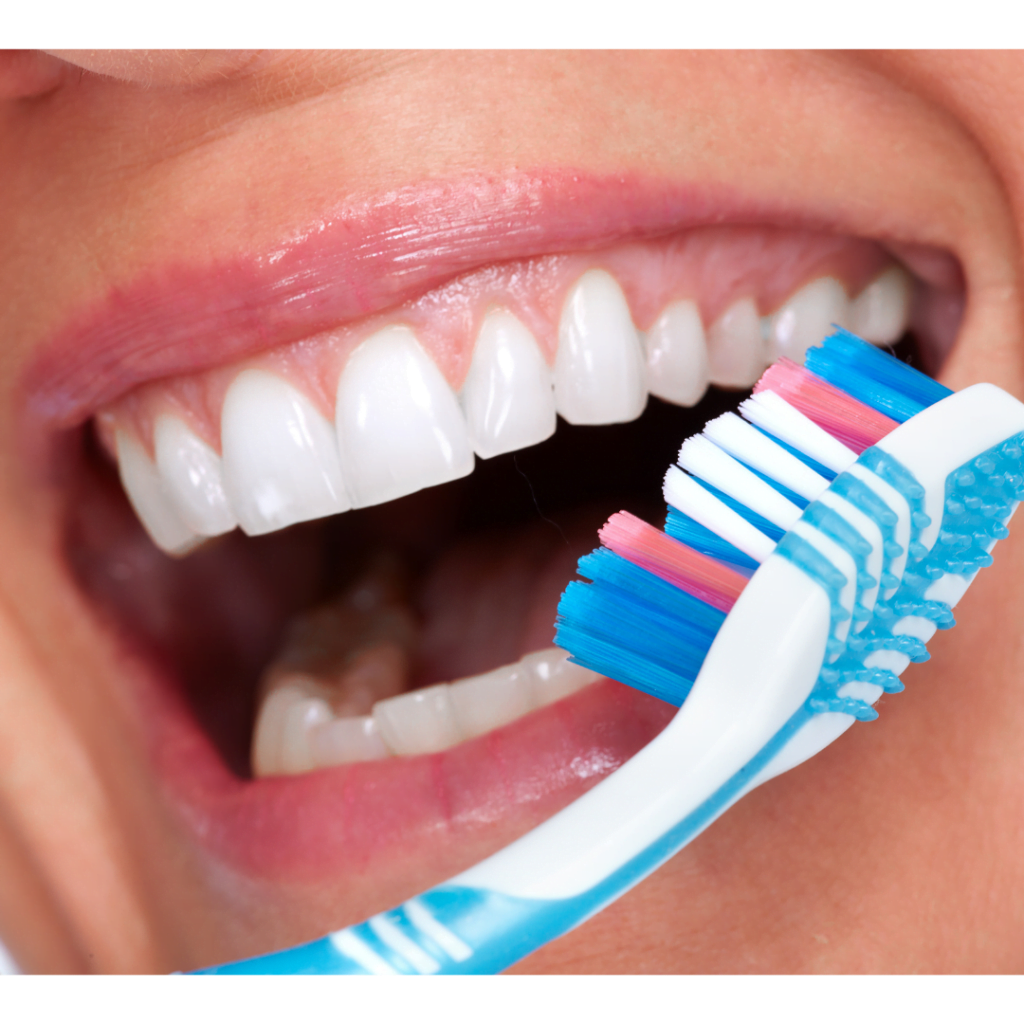Reviewed and updated for accuracy on 06/12/23
A captivating smile has the power to brighten a room and leave a lasting impression. But what happens when that smile starts to lose its luster? One common concern that can hinder our confidence is receding gums. You may have noticed your gums gradually pulling back, revealing more of your tooth’s delicate roots. The question lingers in your mind: Why are my gums receding?
Gum recession, also known as gingival recession, is a prevalent dental condition that affects countless individuals. It’s a process where the gum tissue surrounding our teeth wears away or recedes, exposing the sensitive root surfaces. While it may sound alarming, understanding the causes behind this phenomenon can help you take proactive steps towards maintaining optimal oral health.

-
Product on sale
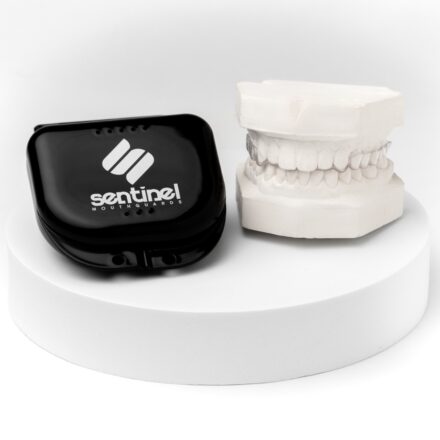 No-Show Day Mouth GuardOriginal price was: $149.00.$129.00Current price is: $129.00.
No-Show Day Mouth GuardOriginal price was: $149.00.$129.00Current price is: $129.00. -
Product on sale
 Durability Mouth Guard for Heavy Teeth GrindingOriginal price was: $215.00.$189.00Current price is: $189.00.
Durability Mouth Guard for Heavy Teeth GrindingOriginal price was: $215.00.$189.00Current price is: $189.00. -
Product on sale
 Tongue and Cheek Biting Relief Mouth GuardsOriginal price was: $189.00.$169.00Current price is: $169.00.
Tongue and Cheek Biting Relief Mouth GuardsOriginal price was: $189.00.$169.00Current price is: $169.00. -
Product on sale
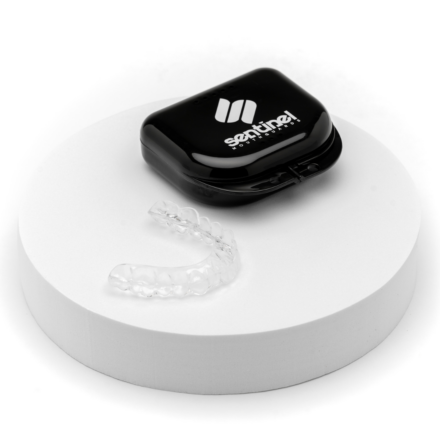 Custom Hard Night GuardOriginal price was: $169.00.$149.00Current price is: $149.00.
Custom Hard Night GuardOriginal price was: $169.00.$149.00Current price is: $149.00. -
Product on sale
 Custom Soft Night GuardOriginal price was: $149.00.$129.00Current price is: $129.00.
Custom Soft Night GuardOriginal price was: $149.00.$129.00Current price is: $129.00. -
Product on sale
 Custom Dual Laminated Night GuardOriginal price was: $169.00.$149.00Current price is: $149.00.
Custom Dual Laminated Night GuardOriginal price was: $169.00.$149.00Current price is: $149.00.
Why are my gums receding?
There are several potential causes for receding gums:
- Gum disease (periodontal disease): This is the most common cause of gum recession. Poor oral hygiene, such as inadequate brushing and flossing, can lead to the accumulation of plaque and bacteria, causing gum inflammation and eventually gum disease. As the disease progresses, the gums can recede.
- Aggressive brushing: Brushing your teeth too hard or using a toothbrush with hard bristles can cause the gum tissue to wear away over time. It is important to use a soft-bristled toothbrush and adopt proper brushing techniques.
- Genetics: Some people may have a genetic predisposition to thin or weak gum tissue, making them more susceptible to gum recession.
- Hormonal changes: Fluctuations in hormone levels, such as during pregnancy or menopause, can make the gums more sensitive and prone to recession.
- Tobacco use: Smoking or chewing tobacco can contribute to gum disease, leading to gum recession.
- Teeth grinding (bruxism): Frequent grinding or clenching of teeth can put excessive pressure on the gums, causing them to recede.
- Poor dental care: Avoiding regular dental check-ups and cleanings can increase the risk of gum disease and gum recession.
- Misaligned teeth or bite problems: When teeth are not properly aligned, they can put uneven pressure on the gums, leading to gum recession.
If you are experiencing gum recession, it is important to consult a dentist. They can assess the extent of the recession and recommend appropriate treatment options, such as deep cleaning, gum grafting, or orthodontic treatment. Maintaining good oral hygiene practices, such as brushing and flossing regularly and using a soft-bristled toothbrush, can also help prevent further gum recession.
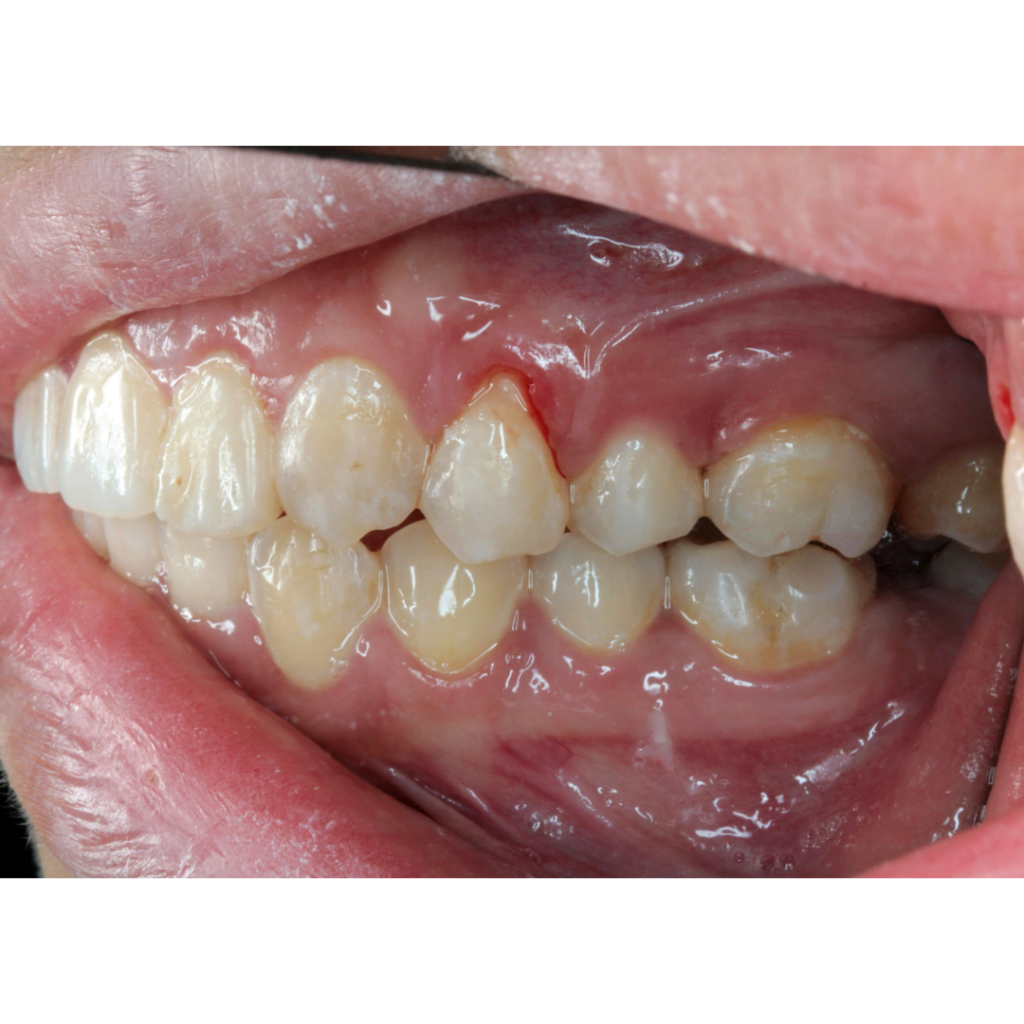
How do you fix receding gums?
The treatment for receding gums depends on the severity of the condition and the underlying cause. Here are some common approaches used to fix receding gums:
- Scaling and root planing: This deep cleaning procedure is often the first line of treatment for gum disease. It involves removing plaque and tartar buildup from the tooth’s root surfaces and smoothing the root to discourage further bacterial growth. Scaling and root planing can help reduce inflammation and promote gum reattachment.
- Gum grafting: In cases of significant gum recession, a surgical procedure known as gum grafting may be recommended. During this procedure, a periodontist takes tissue from another part of your mouth (such as the roof of the mouth) or uses donor tissue and grafts it onto the affected areas. This helps to cover exposed tooth roots and restore gum tissue.
- Pinhole surgical technique: A minimally invasive alternative to gum grafting is the pinhole surgical technique. It involves making a small hole in the gum tissue near the receded area and using special instruments to gently loosen and reposition the gum tissue to cover the exposed roots. This technique typically has a shorter recovery time compared to traditional grafting methods.
- Proper oral hygiene: Maintaining good oral hygiene is essential in preventing further gum recession. Brush your teeth gently twice a day with a soft-bristled toothbrush, using a circular motion. Floss daily to remove plaque and debris from between your teeth and along the gumline. Consider using an antimicrobial mouthwash as recommended by your dentist.
- Orthodontic treatment: If misaligned teeth or bite problems are contributing to gum recession, orthodontic treatment may be recommended. Correcting the alignment of your teeth can help distribute forces evenly on your gums, reducing the risk of further recession.
- Avoiding tobacco use: If you smoke or chew tobacco, quitting or reducing your tobacco use is crucial for gum health. Tobacco products can contribute to gum disease and hinder the healing process.
- Regular dental check-ups: Visit your dentist regularly for professional cleanings and check-ups. Regular dental examinations allow early detection and intervention for any signs of gum disease or other oral health issues.
It’s important to remember that the appropriate treatment for receding gums depends on your individual circumstances. It’s best to consult with a dental professional who can assess your condition and recommend the most suitable treatment options to address your specific needs. By taking prompt action and following the recommended treatment plan, you can improve the health and appearance of your gums.
Can a mouth guard help prevent gum recession?
Yes, a mouth guard can help prevent gum recession in certain cases. Mouth guards, also known as night guards or occlusal splints, are commonly used to protect teeth and gums from the harmful effects of teeth grinding or clenching, a condition known as bruxism. Bruxism can exert excessive pressure on the teeth and gums, leading to gum recession over time.
By wearing a properly fitted mouth guard, you create a barrier between your upper and lower teeth, reducing the impact of grinding or clenching forces. This helps distribute the pressure more evenly, alleviating stress on the gums and minimizing the risk of gum recession.
Additionally, mouth guards can also help prevent damage to tooth enamel, fractures, and other oral health issues associated with bruxism. They provide a cushioning effect, absorbing the impact and protecting both the teeth and the surrounding gum tissue.
It’s important to note that mouth guards are typically used for nighttime bruxism, but they can also be used during the day if clenching or grinding occurs during waking hours. It is essential to consult with your dentist or orthodontist to evaluate your specific situation and determine whether a mouth guard is appropriate for you. They can customize a mouth guard to fit your mouth precisely and provide instructions on proper use and care.
While a mouth guard can be an effective preventive measure for gum recession caused by bruxism, it may not address other underlying causes such as gum disease or aggressive brushing. Therefore, it’s crucial to address the specific factors contributing to gum recession in your case and follow a comprehensive treatment plan recommended by your dental professional.
Can your gums grow back from receding?
In most cases, receded gum tissue does not grow back on its own. Once gum tissue has receded, it cannot regenerate fully. However, there are treatments available to help restore the appearance of gums and prevent further recession. Here are some options:
- Gum grafting: This surgical procedure involves taking tissue from another part of your mouth (such as the roof of the mouth) or using donor tissue and grafting it onto the areas with receding gums. The grafted tissue helps cover exposed tooth roots and can create the illusion of gum growth.
- Pinhole surgical technique: This minimally invasive procedure is an alternative to gum grafting. It involves making a small hole in the gum tissue near the receded area and using specialized instruments to gently reposition the gum tissue to cover the exposed roots. While it doesn’t involve grafting, it can create the appearance of gum regrowth.
- Scaling and root planing: This deep cleaning procedure is often the initial treatment for gum disease. By removing plaque and tartar buildup from the tooth’s root surfaces, it can help reduce inflammation, improve gum health, and prevent further recession.
It’s important to note that the success of these treatments depends on various factors, such as the extent of gum recession, the underlying cause, and the individual’s overall oral health. Consulting with a dental professional is crucial to determine the most appropriate treatment option for your specific situation.
Prevention is also key in managing gum recession. Maintaining good oral hygiene, including regular brushing and flossing, can help prevent gum disease and minimize the risk of further recession. Visiting your dentist for regular check-ups and cleanings is also important for early detection and intervention.
While receded gum tissue may not grow back completely, modern dental techniques and treatments can help restore the appearance of your gums, improve oral health, and protect against further recession.
How Can I Prevent Gum Recession?
Preventing gum recession involves maintaining good oral hygiene practices and adopting certain habits that promote gum health. Here are some essential tips to help you prevent gum recession:
- Brush your teeth gently: Use a soft-bristled toothbrush and brush your teeth in a circular motion, ensuring you cover all surfaces. Avoid aggressive brushing or using a toothbrush with hard bristles, as it can damage the gum tissue and contribute to recession.
- Floss daily: Clean between your teeth and along the gumline using dental floss or interdental brushes. This helps remove plaque and food particles that can irritate the gums and contribute to gum disease and recession.
- Use a mouthwash: Rinse with an antimicrobial mouthwash as part of your oral hygiene routine. It can help reduce bacteria in the mouth and prevent gum infections.
- Visit your dentist regularly: Schedule regular dental check-ups and professional cleanings. Your dentist can detect early signs of gum disease or other oral health issues and provide appropriate treatment or preventive measures.
- Quit smoking or using tobacco products: Smoking and tobacco use are strongly linked to gum disease and can contribute to gum recession. Quitting or reducing tobacco use is crucial for gum health and overall well-being.
- Manage teeth grinding or clenching: If you grind or clench your teeth, especially during sleep, consider getting a mouth guard or splint. This can help distribute the forces and protect your gums from excessive pressure.
- Maintain a balanced diet: Eating a nutritious diet rich in vitamins and minerals supports gum health. Avoid excessive consumption of sugary and acidic foods and drinks, as they can contribute to gum disease and enamel erosion.
- Manage stress: High levels of stress can contribute to teeth grinding and clenching, which can lead to gum recession. Practice stress management techniques, such as regular exercise, relaxation exercises, and seeking support when needed.
- Correct misaligned teeth or bite issues: If your teeth are misaligned or you have bite problems, consult with an orthodontist. Proper alignment can help distribute forces evenly on the gums, reducing the risk of gum recession.
By implementing these preventive measures and maintaining good oral hygiene practices, you can significantly reduce the risk of gum recession and promote overall gum health. If you have concerns or notice any signs of gum recession, it is important to consult with a dental professional for a thorough evaluation and personalized advice.
What does gum recession look like?
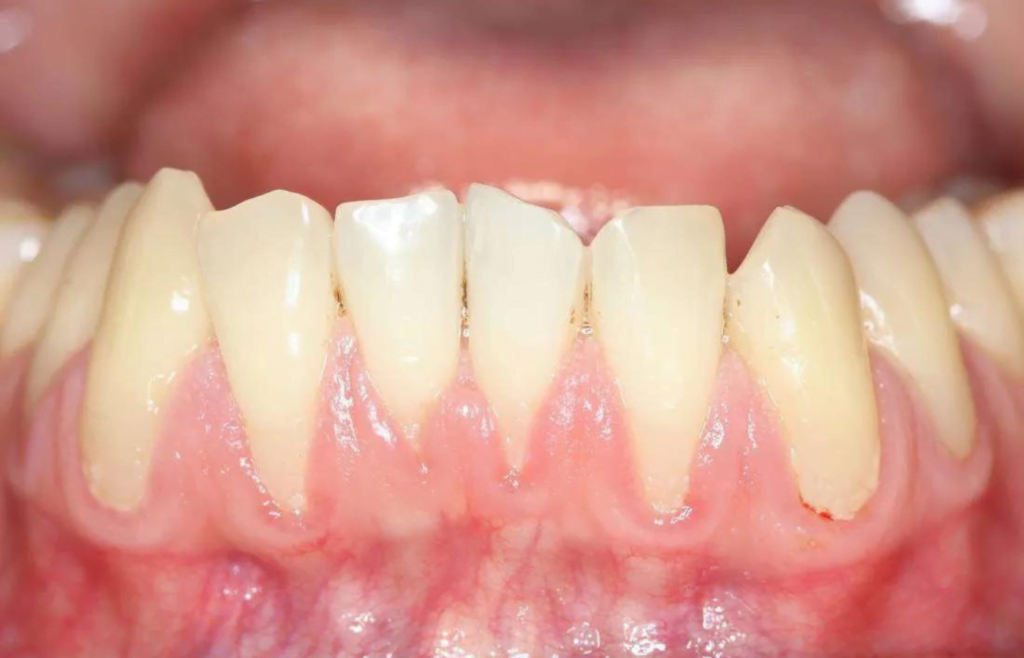
Gum recession is characterized by the gradual or noticeable loss of gum tissue, which can expose the tooth roots. The appearance of gum recession may vary depending on the extent and severity of the condition. Here are some common signs and visual indicators of gum recession:
- Longer tooth appearance: As the gums recede, more of the tooth structure becomes exposed, making the teeth appear longer than usual. This can give the smile an uneven or “toothy” appearance.
- Exposed tooth roots: Receding gums often reveal the yellowish or darker-colored root surfaces of the teeth, which are normally covered by gum tissue. The tooth roots may be sensitive to temperature changes and touch.
- Notched or uneven gumline: The gumline may appear irregular or have a “v”-shaped notch in areas where the gum tissue has receded. This can create an uneven gumline along the affected teeth.
- Sensitivity: Exposed tooth roots can be sensitive to hot or cold temperatures, sweet or acidic foods, and even brushing or flossing. You may experience discomfort or pain when these stimuli come into contact with the exposed areas.
- Spaces between teeth: As the gum tissue recedes, small gaps or spaces may develop between the teeth, especially near the gumline. These spaces can trap food particles and make cleaning between the teeth more challenging.
- Bleeding or swollen gums: Although gum recession itself does not typically cause bleeding, the exposed tooth roots can become more susceptible to plaque buildup, leading to gum inflammation, bleeding, or swelling.
- Changes in tooth mobility: In advanced cases of gum recession, the affected teeth may become loose or shift in position due to the loss of supporting gum and bone tissue.
What are the symptoms of gum recession?
The symptoms of gum recession include longer tooth appearance, exposed tooth roots, notched gumline, sensitivity, spaces between teeth, bleeding or swollen gums, and changes in tooth mobility.
How far can gums recede before teeth fall out?
The extent to which gums can recede before teeth may fall out varies depending on several factors, including the underlying causes, individual oral health, and timely intervention. Severe gum recession can lead to significant damage to the supporting structures of the teeth, including the gum tissue, periodontal ligament, and jawbone.
If left untreated, this can eventually result in tooth loss. However, it’s important to note that gum recession does not always lead to tooth loss, especially if appropriate treatment is sought in a timely manner. Regular dental check-ups and early intervention are crucial for maintaining healthy gums and preventing the progression of gum recession.
Why are my gums receding so quickly?
Gums can recede quickly due to factors such as gum disease, aggressive brushing, poor oral hygiene, genetic predisposition, hormonal changes, tobacco use, teeth grinding or clenching, and misaligned teeth or bite problems. Consulting with a dental professional is important to determine the underlying cause and seek appropriate treatment.
Conclusion
In conclusion, gum recession is a common dental concern that can have various causes and consequences. It is essential to address gum recession promptly to prevent further damage and maintain optimal oral health.
Whether caused by gum disease, aggressive brushing, genetic factors, or other reasons, seeking professional guidance is key. Dentists can evaluate the extent of gum recession, identify underlying factors, and recommend suitable treatment options such as gum grafting or the pinhole surgical technique.
Additionally, practicing good oral hygiene, quitting tobacco use, managing stress, and addressing teeth grinding or misalignment can help prevent or slow down gum recession. By taking proactive steps and seeking timely intervention, individuals can protect their gums, preserve their natural teeth, and maintain a healthy smile for years to come.
Remember, maintaining a partnership with your dental professional is vital in the ongoing care of your gums and overall oral health.
Would you like to learn more about Sentinel Mouthguards products and services?
Visit our help center today!

